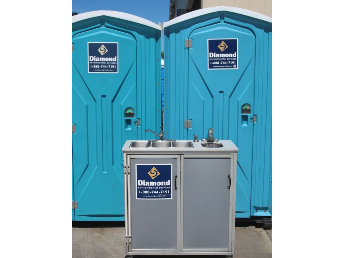
Different Types Of Portable Toilets
Portable toilets the different types for construction worksites tend to see a high usage of portable toilets. They are the common blue units installed at different places situated within the perimeter of the construction worksite. They are also responsible for ensuring good sanitary facilities by enabling the workers to use clean toilets as and when required and also keeping the planet clean.
What is a portable toilet
As the name suggests any toilet which can be moved is known as a portable toilet. Thus they are not connected to either a:
- Pit latrine of a home dug into the ground,
- Septic tank or
- Plumbed into the main city sewerage lines.
Portable toilets are thus those:
- Which can be transported to their place of usage and installed on site,
- Situated within mobile vans and caravans,
- Reusable toilets which can be transported from one worksite location to another and reused etc.
One important characteristic of these portable toilets is that they are generally installed in places where there are no pre-existing on-site services like sewage disposal. In fact these portable toilets are self-contained units which make them ideal for installation at construction worksites which lack basic amenities immensely.
Types of portable toilets
There are many different types of portable toilets in use today like:
- Chemical toilets: In this type of toilet, all the human excreta get accumulated in the holding tank. Chemicals present in the holding tank help mask the odour or they contain biocides which keep the bacteria from multiplying thereby reducing the smell to the minimum. There are two types of chemical toilets generally used in construction job sites:
- Chemical toilets using cold water for flushing and
- Chemical toilets using hot water for all purposes like washing hands etc.
- Urine diverting dry toilet: Also known as UDDT, this type of portable toilets are ideal for those construction worksites where there is a scarcity of water. In this type of portable toilet the waste water and faeces get collected in separate compartments without using the flush water thereby making this an odour free operation. Due to the drying of both the faeces and the urine, multiplication of disease causing pathogens is greatly reduced. This type of portable toilet is a very good example of a sustainable sanitation system since the dried faeces and urine are regularly used as fertiliser in agriculture.
- Composting toilet: Composting is a biological process used to treat human faeces so that decomposition of the same can be facilitated and the human faeces can turn to compost. This composting and decomposition is generally carried out in an atmosphere of controlled aerobic condition. These are also dry portable toilets since they do not use any flush water.
- Container based sanitation: this low-cost sanitation system facilitates the collection of human excreta in sealed removable cartridges or containers which are then transported to approved treatment facilities. These can either be disposed of or reused as the need may be. The best advantage of this process is that there is absolutely no contact with the excreta. This portable toilet is a great option for areas where it is either not feasible neither is it appropriate to construct or use the sewerage system.
- Bucket toilet: This dry portable toilet uses a bucket to collect human excreta. But since both the faeces and urine are collected into the same compartment, there are odour issues. Hence this type of portable toilet is generally not preferred in construction worksites.
- Freezing toilet: Electricity is used to freeze the contents of this dry toilet. These toilets work exclusively on electricity and hence there is no need for any pipes, ventilation water or chemicals. Due to the application of electricity, the faeces and other human wastes quickly freeze thereby providing no opportunity for bacteria to grow. This ensures that the toilets remain odourless. Since this kind of portable dry toilet cannot work without electricity, it needs to be installed near an electrical socket so that they can be plugged for use.
- Incineration toilets: Like freezing toilets, the incineration portable toilets are also dry toilets where there is no use of water. They are extremely appropriate for installation in places where there is no facility for dumping human faeces. Hence it is all collected into the holding tank and incinerated to form ash which is pathogen free. These toilets either use electricity, gas, other energy sources, dried faeces etc., to power it. These incinerating toilets are also less costly than the normal standard portable toilets.
- Welfare units: This uses a slightly different concept and has a chemical toilet with a supply of hot water, a drying room , a canteen and even a generator. These can be used on standby for those high management officials or clients who come for a visit and to check on the progress of their dream project.
With such advanced technology being applied to ensure that good sanitation exists even on construction worksites, more and more people are opting for the same. Thus today construction toilets are popular enough to be in high demand.
Portable Event Restrooms
